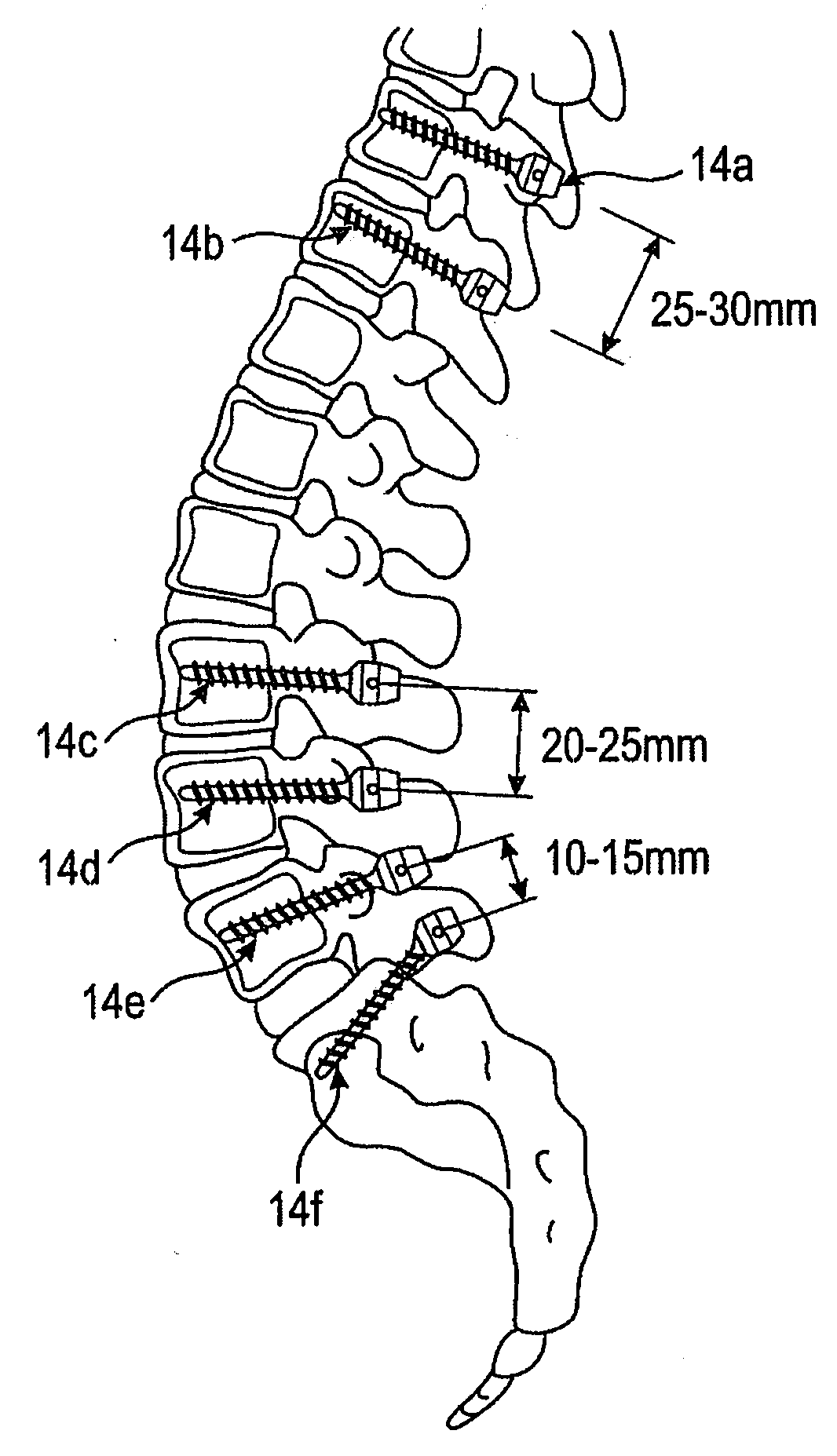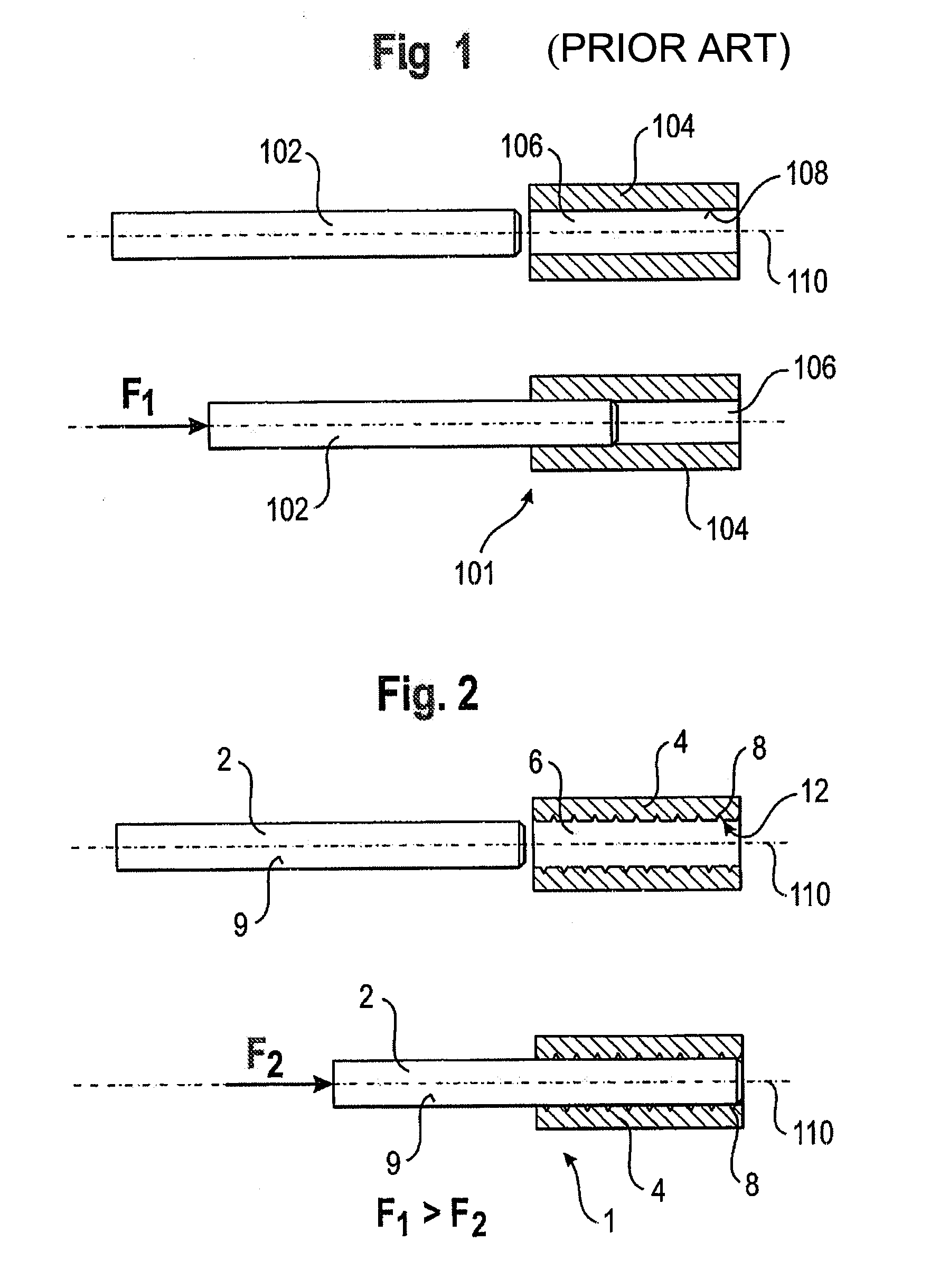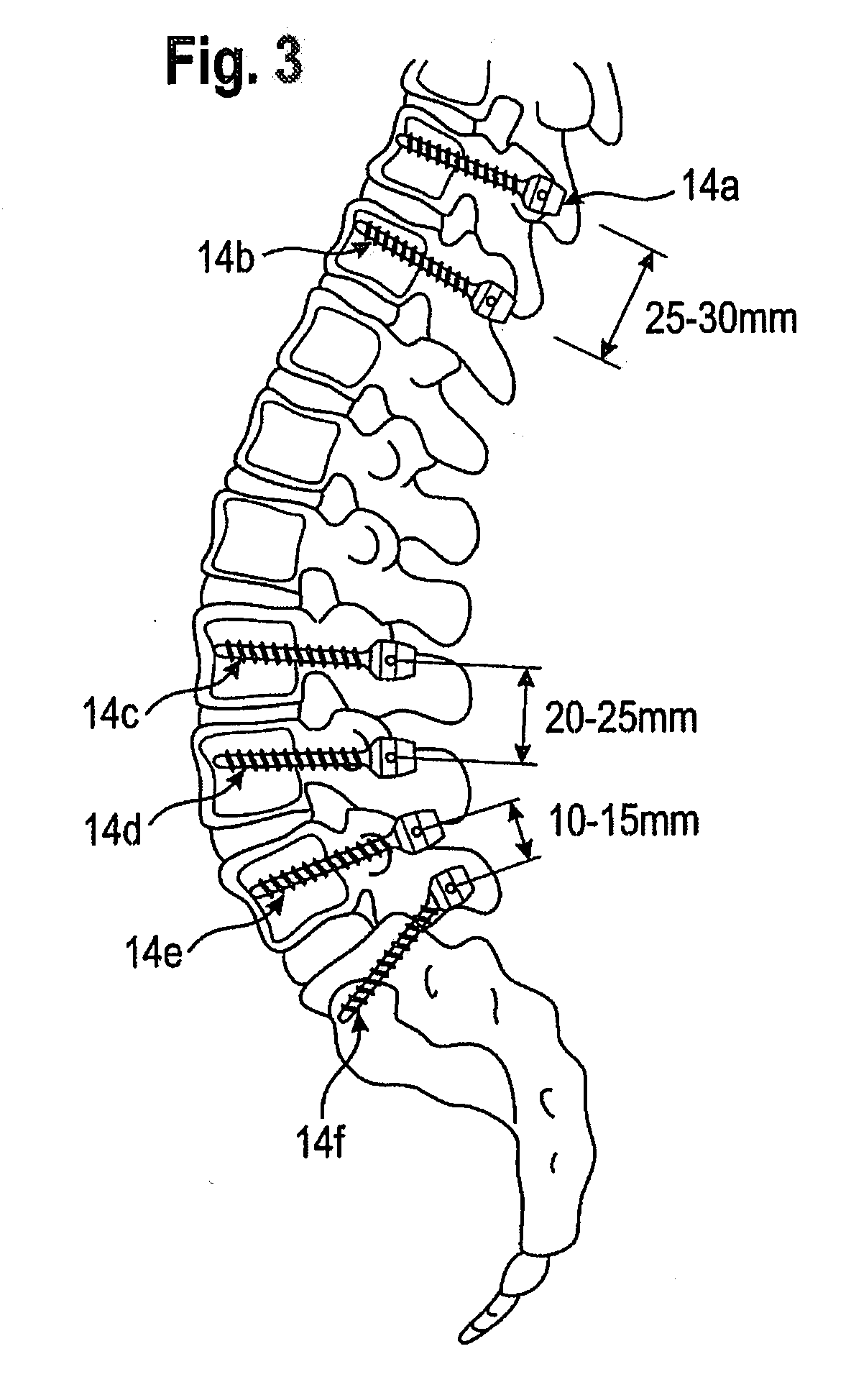Rod connection in a surgical device and rod-shaped bone stabilization device comprising the same
a bone stabilization device and surgical device technology, applied in the direction of shrinkage connection, diagnostics, applications, etc., can solve the problems of increasing relative amount of interference, requiring considerable axial forces to assemble components, etc., to reduce the force necessary, efficiently transmit the bending moment applied, and stabilize the device against bending
- Summary
- Abstract
- Description
- Claims
- Application Information
AI Technical Summary
Benefits of technology
Problems solved by technology
Method used
Image
Examples
first embodiment
[0042]A first embodiment concerning a bone stabilization device is detailed with regard to FIGS. 3-8. FIG. 3 shows a lower part of the spine anatomy in conjunction with variously positioned bone fixation elements 14a-14f. The bone fixation elements include a bone anchoring element such as a bone screw and a receiving part for receiving and fixing, e.g., a head portion of the bone screw. Each of the bone fixation elements 14a-14f is anchored in one vertebrae of either the thoracic or lumbar spine.
[0043]A bone stabilization device may include a rod device 16 (not shown in FIG. 3) which connects at least two of the bone fixation elements 14a-14f. As shown in the partial views of FIGS. 4, 5A and 5B, the rod includes a first section 20, a second section 22 and a flexible section 24 extending between the sections 20, 22. Note that the sections 20, 22 are cut at the left and right ends, respectively, for illustration purposes. The bone fixation elements 14a-14f are arranged according to an...
second embodiment
[0056]A second embodiment will be explained with reference to FIGS. 9-12. FIG. 9 shows an angular measurement device 51 for clinical surgery applications. A shifting element 57 may be manually pushed in longitudinal direction of the main body housing 53 with an actuator (not shown). Depending on the shift position of the shifting element 57 an opening angle of plate-like members 61, 63 is achieved. Thereby, the plate-like members pivot around a shaft axis 65 held on support arms 66.
[0057]The shift position of the shifting element 57 is converted into a pivoting movement of the plate-like members 61, 63 by virtue of a connecting member 59. The connecting member 59 has a shaft hole 69 through which a shaft (not shown in FIG. 9) mounted to the shifting element 57 extends such that the connecting member 59 is rotatable relative to the shaft.
[0058]Further, as shown in FIGS. 10, 11A and 11B, the connecting member 59 has a bore 73 through which a further shaft 67 extends. The shaft 67 is p...
PUM
 Login to View More
Login to View More Abstract
Description
Claims
Application Information
 Login to View More
Login to View More - R&D
- Intellectual Property
- Life Sciences
- Materials
- Tech Scout
- Unparalleled Data Quality
- Higher Quality Content
- 60% Fewer Hallucinations
Browse by: Latest US Patents, China's latest patents, Technical Efficacy Thesaurus, Application Domain, Technology Topic, Popular Technical Reports.
© 2025 PatSnap. All rights reserved.Legal|Privacy policy|Modern Slavery Act Transparency Statement|Sitemap|About US| Contact US: help@patsnap.com



